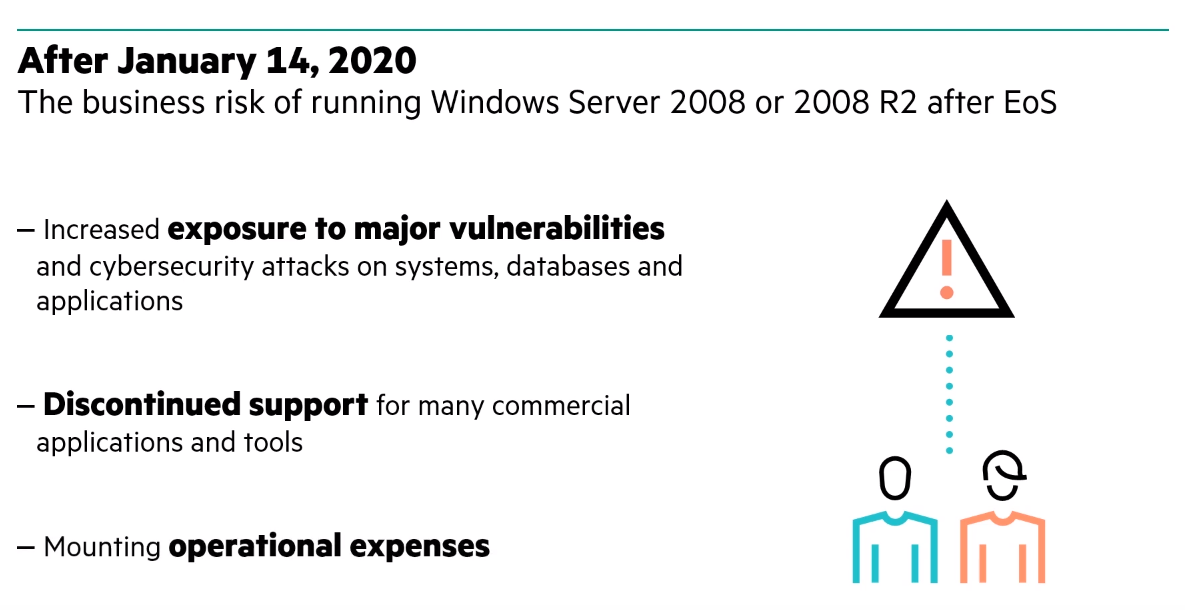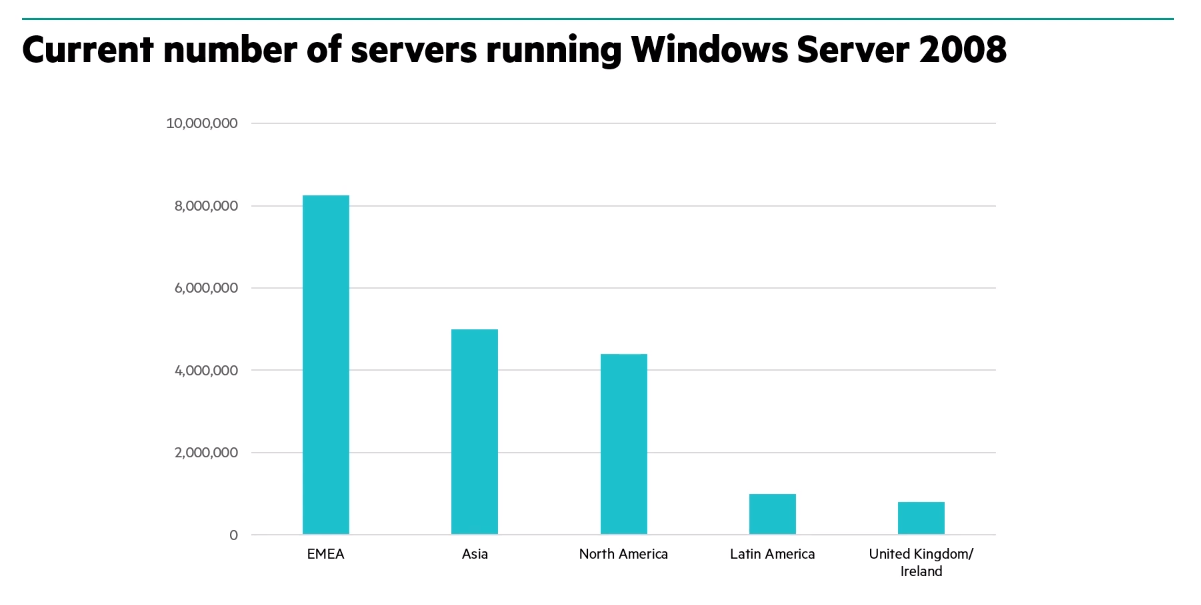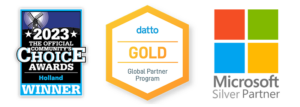Microsoft has removed this video, but you may read our transcript below.
Video Transcript
Windows Server 2008 is one of the most popular offerings ever from Microsoft.
In fact, on a worldwide basis there’s still roughly 20 million servers running this OS. But it was really designed for a different era.
Things like cloud computing and cybersecurity all reqire a modern OS.
So Microsoft has announced the official end of support for Windows Server 2008. The effective date is January 14, 2020.
That’s really not that far away when you think of everything that has to be done to upgrade an OS, especially testing the applications to make sure they’re rock solid before you go live.
It’s going to be really challenging to run a business on this legacy operating system after 2020 and even though many companies may feel comfortable with an unsupported OS, there are regulations that require many businesses to be on a secure, supported OS. So continuing to run on it may not be an option.
We see three major areas for concern.

Significantly higher risks of cybercrime is probably number one.
The second thing is that many application vendors will probably cut off support once the OS is not supported. So you’ll have unsupported applications running on an unsupported operating system.
The third thing is legacy systems are really expensive to maintain.
So who’s going to be affected? The numbers are really startling.

Apparently people really loved Windows Server 2008 because it’s in broad used all over the world.
In fact, in North America more than four million servers are facing this end of support deadline.
Many organizations will be tempted to wait until the very last second for the end of support deadline for 2008, but there are very compelling reasons to do it as soon as possible.
How can Shoreline Technology Solutions help upgrade my Windows Server 2008?
When it comes to upgrading Windows Server 2008, our techs can help your business assess, migrate, and optimize your upgrade.
- Assess – Identify and inventory your apps and server roles running on Windows Server 2008 and 2008 R2. Analyze each workload to determine the best path—migrate to Azure or upgrade on-premises.
- Migrate – Make the move—migrate your virtual machines to Azure or upgrade to the latest version of Windows Server.
- Optimize – Fine-tune your resources to optimize costs, manage resources, and strengthen security and compliance across hybrid workloads.
Contact us today to learn how our small business server 2008 modernization paths can help protect your business.

President / Network Architect
Mark Kolean always had a fascination with technology from the time he was 3 and his gift of the Atari 2600 to current. In 1990 at the age of 14 Mark got his first job in customer support for a mail order business supporting Tandy TSR-80 computer software shipped on cassette tape. A few years later Mark was building hundreds of 286, 386, and 486 computers for the new emerging DOS & Windows 3.1 computers that had exploded on the market.
After a college career studying business and technology Mark Started Shoreline Computer Systems in 1999 at the height of the dot.com boom with the looming crisis of the year2k bug just around the corner. In the early 2000’s a lot of work was done with early network systems including Lantastic, Novell, and Windows NT Server. Mark became a community contributor to the Small Business Specialist community that revolved around Small Business Server 2000-2011 which focused on single or dual server environments for businesses up to 50 in size. Networks during this time frame mostly had a break fix relationship in which work was billed only when a problem occurred.
In the 2010’s Microsoft released their first cloud based software called Microsoft BPOS which would in later become known as Microsoft Office 365. This introduced a new model in technology with pay as you go subscription services. Starting in 2013 Mark’s team at Shoreline Computer System rebranded as Shoreline Technology Solutions to focus on the transition to become proactive and less reactive to data backup and security needs. Starting in 2018 all customers are required to have a backup management plan in place as a center point with the full understanding that if STS isn’t watching the customer’s data, then no one is.
Now in Mark’s 22 years of business he is building a company emphasis of how to help customers retire servers and build networks completely in the cloud.


Leave a Reply
You must be logged in to post a comment.